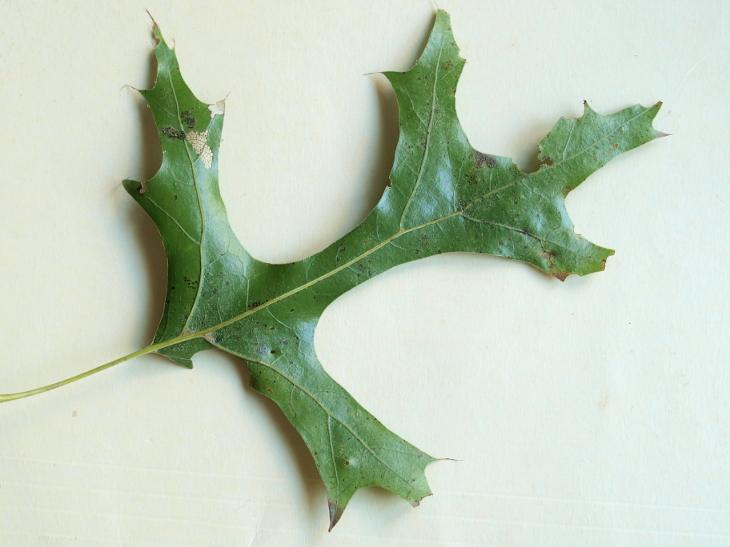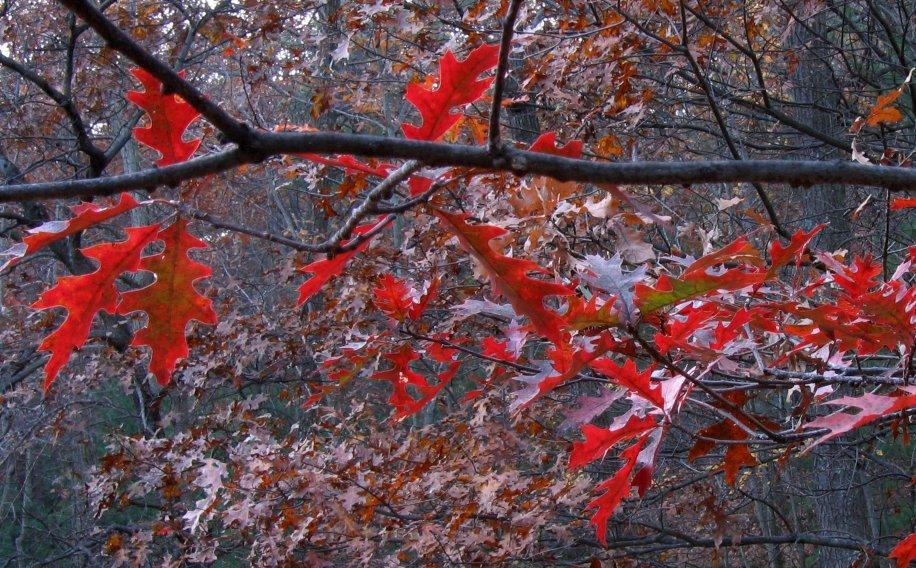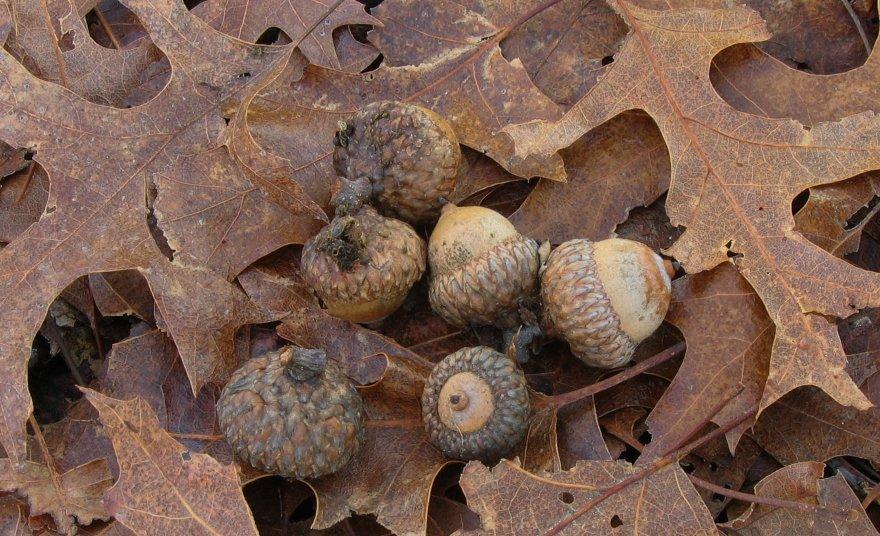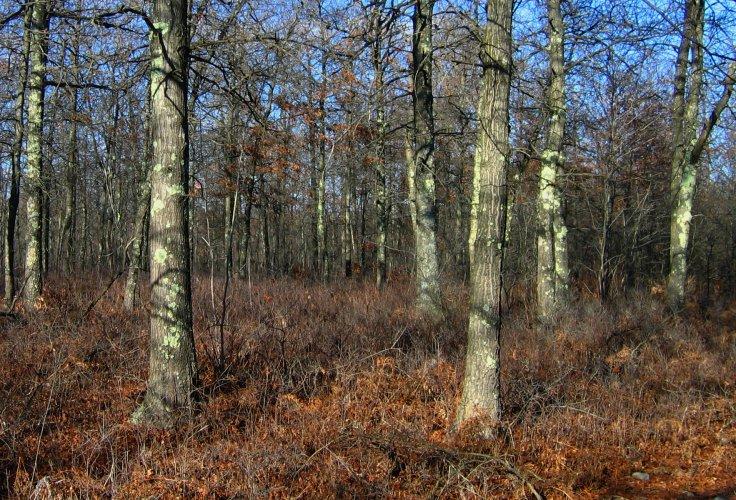Scarlet oak
Quercus coccinea
Black, red, scarlet, scrub... Why are there quite a few oaks in Alper Preserve all having pointed lobes with bristles at tips,
while there only one (white oak) with rounded lobes? Here is the answer: North America has been the center of speciation of
a large group of oaks, which collectively can be called “red-oak group.” Numerous species of this group have come into being
right on this continent and don't occur anywhere else. Oaks from this group are generally the most common in North America.
They are closely related, and from the first glance look similar with their bristly, pointed leaf lobes.
The late fall is the time when scarlet oak becomes diferent from other oaks: while they turn brick-orange and rich brown,
this one becomes truly scarlet! Leaves are often very deeply incised, so that there is nearly no “flesh” in them—much like
deeply cut upper-crown leaves of black oak; the bristly lobes are narrow and often asymmetric. The bark on the lower stem
is similar to that of red oak, only darker and not as uniformly cracked all the way from the bottom up. Scarlet oak can also
be told by its small, nearly round acorns whose cups cover one-third to a half of the acorn.

A leaf of scarlet oak

Foliage stands out against browning leaves of other oaks. November 5

Small acorns with deep cups and incised leaves. December 16

Scarlet oak grove on poor, shallow, rocky soil. December, Ames Nowell State Park, Abington